-
 bitcoin
bitcoin $114320.977035 USD
-0.40% -
 ethereum
ethereum $4152.439985 USD
-1.75% -
 tether
tether $1.000111 USD
-0.04% -
 xrp
xrp $2.843037 USD
-1.63% -
 bnb
bnb $1013.349380 USD
-1.62% -
 solana
solana $208.362767 USD
-2.10% -
 usd-coin
usd-coin $0.999783 USD
0.00% -
 dogecoin
dogecoin $0.232559 USD
-1.00% -
 tron
tron $0.333491 USD
-1.09% -
 cardano
cardano $0.806310 USD
0.19% -
 hyperliquid
hyperliquid $45.023720 USD
-1.59% -
 ethena-usde
ethena-usde $1.000819 USD
-0.06% -
 chainlink
chainlink $21.241249 USD
-2.11% -
 avalanche
avalanche $30.035416 USD
-0.66% -
 stellar
stellar $0.364984 USD
-2.05%
How do I sign messages with Trezor?
Use your Trezor to sign messages in Suite for secure identity verification—confirm on device, copy signature, and verify ownership without exposing private keys.
Sep 25, 2025 at 04:37 pm
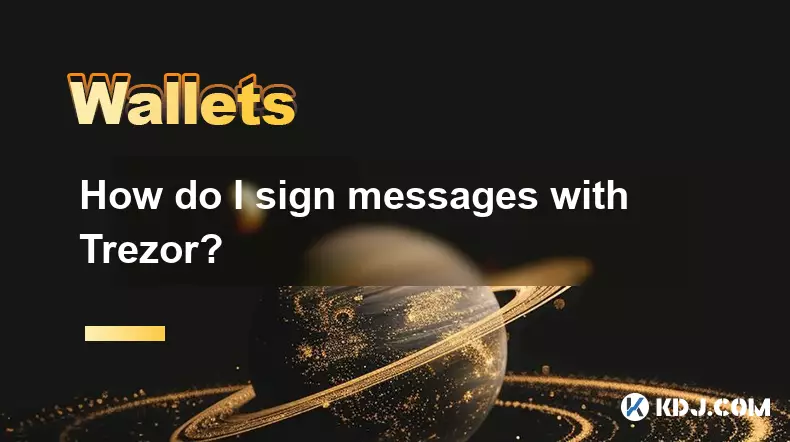
Signing Messages with Trezor: A Practical Guide
Using a Trezor hardware wallet to sign messages adds a powerful layer of identity verification and security. This process allows users to cryptographically prove ownership of a private key without exposing it. Signing is especially useful when interacting with decentralized applications, verifying digital identities, or participating in blockchain governance.
Preparing Your Trezor Device
1. Connect your Trezor to your computer using the provided USB cable.2. Unlock your device by entering the correct PIN through the physical interface.- Open the official Trezor Suite application at suite.trezor.io.
- Ensure your browser supports WebUSB and that you are using Chrome, Brave, or Edge for full compatibility.
- Confirm that your Trezor firmware is up to date to avoid any compatibility issues during message signing.
Accessing the Sign Message Feature
- In Trezor Suite, navigate to the 'Accounts' section and select the cryptocurrency account you wish to use for signing.
- Click on the three-dot menu next to the account and choose the “Sign & Verify” option.
- Switch to the “Sign” tab within the message tool.
- Enter the message you want to sign into the text field—this can be plain text, a URL, or any string of characters.
- Select the specific address associated with your wallet that will be used to sign the message.
Completing the Signature Process
1. After entering the message and selecting the address, click the “Sign” button.2. The request will be sent securely to your Trezor device.- Physically confirm the message details on your Trezor’s screen before approving.
- Once approved, the device generates a cryptographic signature tied to your private key.
- The resulting signature, displayed in hexadecimal format, appears in Trezor Suite and can be copied for external use.
Verifying Signed Messages
- To verify authenticity, paste the original message, the public address, and the signature into a compatible verification tool.
- Verification confirms whether the message was signed by the owner of the private key linked to that address.
- Decentralized platforms often provide built-in tools for this purpose.
- A successful verification means the signer controls the wallet and hasn’t altered the message post-signature.
- Never share signatures for sensitive operations unless you trust the requesting party completely.
Frequently Asked Questions
Can I sign messages offline with Trezor?Yes, advanced users can utilize tools like trezorctl via command line in an air-gapped environment. This requires manual data transfer using SD cards or QR codes, ensuring no internet-connected device touches the private keys.
Does signing a message spend cryptocurrency?No, message signing is entirely separate from transaction broadcasting. It does not involve network fees or movement of funds. It's purely a cryptographic proof of ownership.
What happens if I lose the signed message?The signature itself holds no intrinsic value beyond its intended use. You can always sign the same or a new message again using your Trezor as long as the device and recovery seed remain secure.
Are there size limits for messages I can sign?Trezor imposes practical limits based on display capacity and protocol constraints. Extremely long messages may need to be hashed first, then the hash is signed instead of the full text to maintain usability and security.
Disclaimer:info@kdj.com
The information provided is not trading advice. kdj.com does not assume any responsibility for any investments made based on the information provided in this article. Cryptocurrencies are highly volatile and it is highly recommended that you invest with caution after thorough research!
If you believe that the content used on this website infringes your copyright, please contact us immediately (info@kdj.com) and we will delete it promptly.
- BlockDAG, DOGE, HYPE Sponsorship: Crypto Trends Shaping 2025
- 2025-10-01 00:25:13
- Deutsche Börse and Circle: A StableCoin Adoption Powerhouse in Europe
- 2025-10-01 00:25:13
- BlockDAG's Presale Buzz: Is It the Crypto to Watch in October 2025?
- 2025-10-01 00:30:13
- Bitcoin, Crypto, and IQ: When Genius Meets Digital Gold?
- 2025-10-01 00:30:13
- Stablecoins, American Innovation, and Wallet Tokens: The Next Frontier
- 2025-10-01 00:35:12
- NBU, Coins, and Crypto in Ukraine: A New Yorker's Take
- 2025-10-01 00:45:14
Related knowledge

How to get the Trust Wallet browser extension?
Oct 01,2025 at 12:37am
How to Access the Trust Wallet Browser Extension1. Visit the official Trust Wallet website through a secure internet connection. Navigate to the downl...
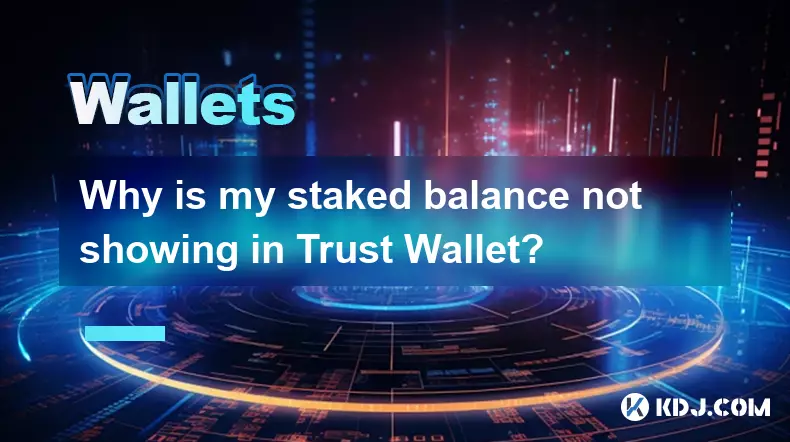
Why is my staked balance not showing in Trust Wallet?
Oct 01,2025 at 12:54am
Understanding Decentralized Exchanges in the Crypto Ecosystem1. Decentralized exchanges (DEXs) operate without a central authority, allowing users to ...
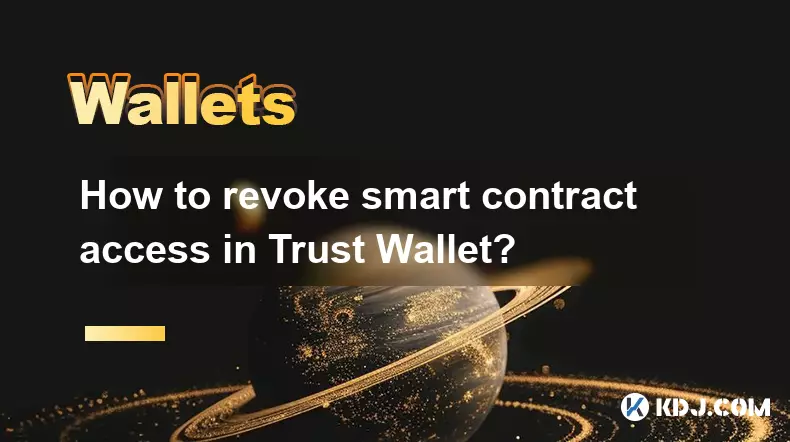
How to revoke smart contract access in Trust Wallet?
Oct 01,2025 at 12:54pm
Understanding Smart Contract Access in Trust Wallet1. Smart contracts are self-executing agreements built on blockchain networks, commonly used in dec...
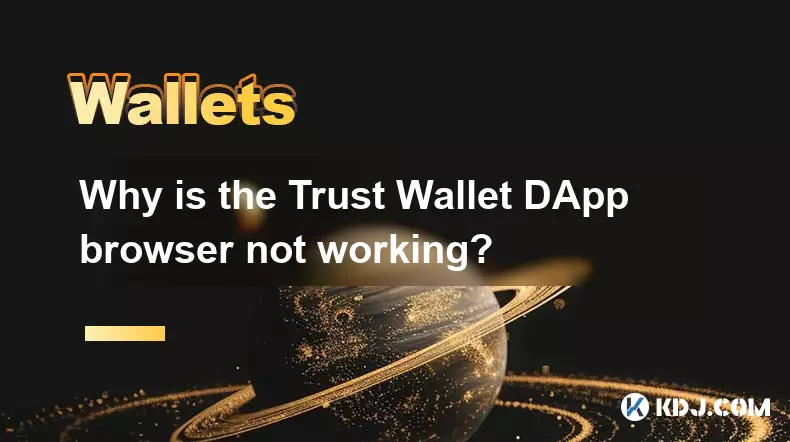
Why is the Trust Wallet DApp browser not working?
Oct 01,2025 at 05:36am
Common Causes of Trust Wallet DApp Browser Issues1. The DApp browser within Trust Wallet may fail to load due to connectivity problems. A weak or unst...
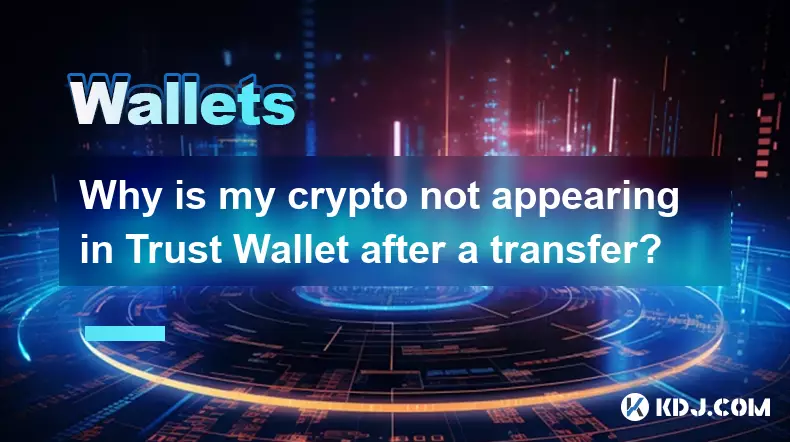
Why is my crypto not appearing in Trust Wallet after a transfer?
Oct 01,2025 at 04:36am
Common Reasons Your Crypto Doesn’t Appear in Trust Wallet1. The transaction is still pending on the blockchain. Blockchain confirmations can take time...
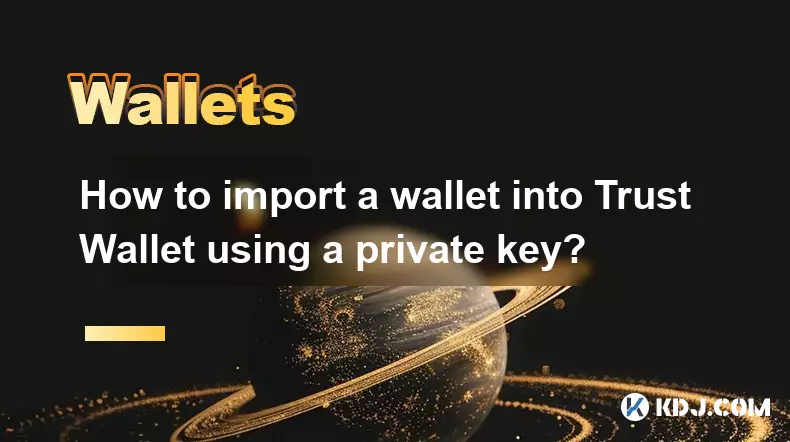
How to import a wallet into Trust Wallet using a private key?
Oct 01,2025 at 09:54am
Understanding Wallet Import via Private Key in Trust Wallet1. Trust Wallet allows users to import existing cryptocurrency wallets using a private key,...

How to get the Trust Wallet browser extension?
Oct 01,2025 at 12:37am
How to Access the Trust Wallet Browser Extension1. Visit the official Trust Wallet website through a secure internet connection. Navigate to the downl...

Why is my staked balance not showing in Trust Wallet?
Oct 01,2025 at 12:54am
Understanding Decentralized Exchanges in the Crypto Ecosystem1. Decentralized exchanges (DEXs) operate without a central authority, allowing users to ...

How to revoke smart contract access in Trust Wallet?
Oct 01,2025 at 12:54pm
Understanding Smart Contract Access in Trust Wallet1. Smart contracts are self-executing agreements built on blockchain networks, commonly used in dec...

Why is the Trust Wallet DApp browser not working?
Oct 01,2025 at 05:36am
Common Causes of Trust Wallet DApp Browser Issues1. The DApp browser within Trust Wallet may fail to load due to connectivity problems. A weak or unst...

Why is my crypto not appearing in Trust Wallet after a transfer?
Oct 01,2025 at 04:36am
Common Reasons Your Crypto Doesn’t Appear in Trust Wallet1. The transaction is still pending on the blockchain. Blockchain confirmations can take time...

How to import a wallet into Trust Wallet using a private key?
Oct 01,2025 at 09:54am
Understanding Wallet Import via Private Key in Trust Wallet1. Trust Wallet allows users to import existing cryptocurrency wallets using a private key,...
See all articles










































































